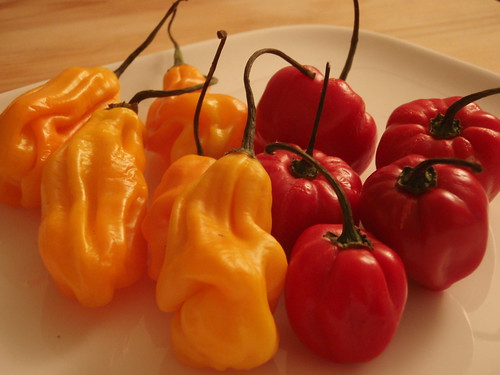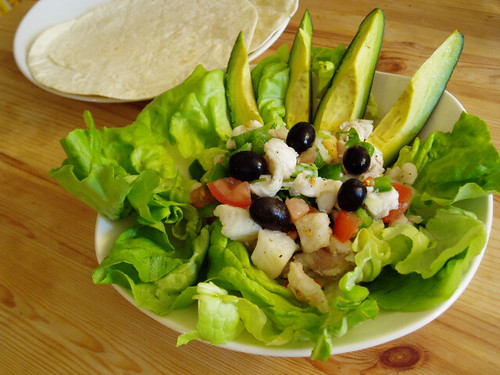Pisto/Ratatouille?
Is pisto a mushy ratatouille, or is ratatouille a pisto with aubergines? Both are a perfect stew of fresh summer vegetables and a fantastic celebration of the season. They are both staples in the home kitchen, although the French ratatouille nicoise gained exposure from a Disney rat, while Spanish pisto manchego is described internationally as the "Spanish Ratatouille".
What makes one a traditional Spanish or French dish? At the very least, they both agree that it must include onions, garlic, bell peppers, courgette (zucchini) and lots of fresh tomatoes, otherwise it's a different dish. The French version however insists that aubergines (eggplant) are integral, while they are not a strict requirement for the Spanish. But many Spanish grandmothers would swear by using aubergines in their pisto, so would that make it ratatouille?
I found pisto to be more of a sauce than a stew, where the tomatoes and aubergines melt away into a paste and the courgettes tender. Ratatouille is more a stew and an interplay between tomatoes, courgettes and aubergines. Cooking pisto is seemingly more relaxed - just chop and stew, while some ratatouille recipes require meticulous preparation - deseeding, peeling and/or individual cooking. The flavors of the vegetables are more discriminant, like the one the rat cooked in "Ratatouille a la Ratatouille".
Pisto lets the vegetables cook in their own juices with little or none accents of basil or oregano, while ratatouille may use various French herbs such as basil, marjoram, thyme, etc (see: herbes de Provence). But herein lies the problem with popular, traditional food: there are thousands of variations and no single "true" recipe. While some might say, pisto and ratatouille are like apples and oranges, I bet there are many proven pisto recipes that veer dangerously close into ratatouille territory, and vice versa.
At least we have the egg. Pisto is often served with a fried or poached egg, while not many ratatouille does - some French purists would quickly disapprove it. Commonly the egg is poached on top of the stew, a technique I also used while cooking chupe. I wonder if this is a Spanish thing. They sure love eggs.
Read full article...
What makes one a traditional Spanish or French dish? At the very least, they both agree that it must include onions, garlic, bell peppers, courgette (zucchini) and lots of fresh tomatoes, otherwise it's a different dish. The French version however insists that aubergines (eggplant) are integral, while they are not a strict requirement for the Spanish. But many Spanish grandmothers would swear by using aubergines in their pisto, so would that make it ratatouille?
I found pisto to be more of a sauce than a stew, where the tomatoes and aubergines melt away into a paste and the courgettes tender. Ratatouille is more a stew and an interplay between tomatoes, courgettes and aubergines. Cooking pisto is seemingly more relaxed - just chop and stew, while some ratatouille recipes require meticulous preparation - deseeding, peeling and/or individual cooking. The flavors of the vegetables are more discriminant, like the one the rat cooked in "Ratatouille a la Ratatouille".
Pisto lets the vegetables cook in their own juices with little or none accents of basil or oregano, while ratatouille may use various French herbs such as basil, marjoram, thyme, etc (see: herbes de Provence). But herein lies the problem with popular, traditional food: there are thousands of variations and no single "true" recipe. While some might say, pisto and ratatouille are like apples and oranges, I bet there are many proven pisto recipes that veer dangerously close into ratatouille territory, and vice versa.
At least we have the egg. Pisto is often served with a fried or poached egg, while not many ratatouille does - some French purists would quickly disapprove it. Commonly the egg is poached on top of the stew, a technique I also used while cooking chupe. I wonder if this is a Spanish thing. They sure love eggs.






